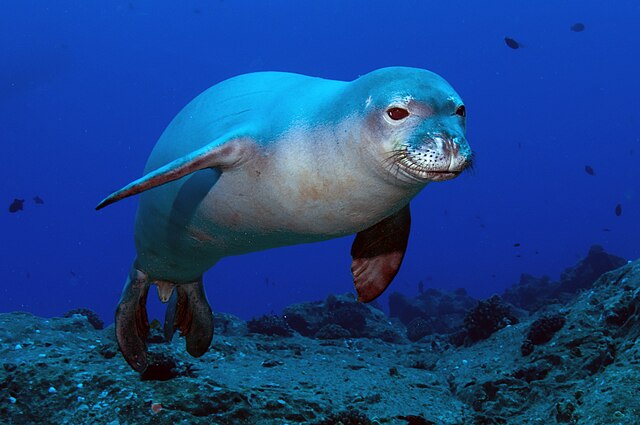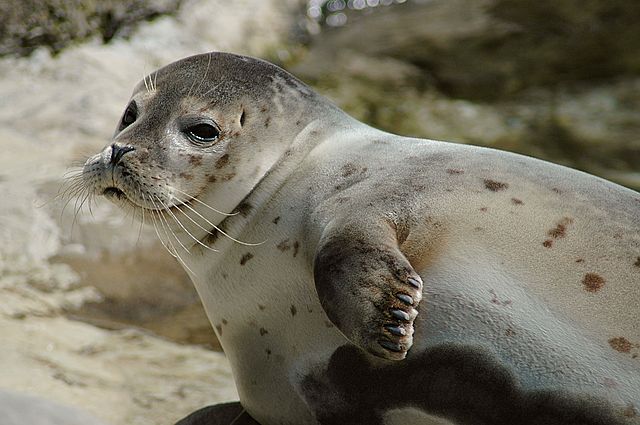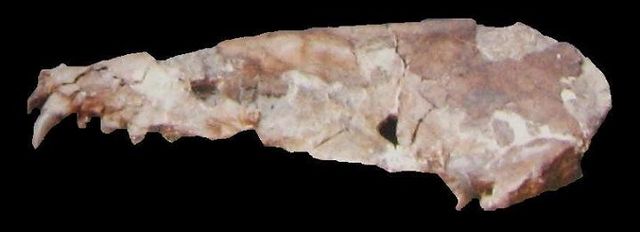Monk seals are earless seals of the tribe Monachini. They are the only earless seals found in tropical climates. The two genera of monk seals, Monachus and Neomonachus, comprise three species: the Mediterranean monk seal, Monachus monachus; the Hawaiian monk seal, Neomonachus schauinslandi; and the Caribbean monk seal, Neomonachus tropicalis, which became extinct in the 20th century. The two surviving species are now rare and in imminent danger of extinction. All three monk seal species were classified in genus Monachus until 2014, when the Caribbean and Hawaiian species were placed into a new genus, Neomonachus.
Image: Anim 2601 (33910324514)
Image: Monachus monachus DSC 0274
Hawaiian monk seal hauled out on volcanic rock
Hawaiian monk seal swimming (note the red eyes are due to the red-eye effect)
The earless seals, phocids, or true seals are one of the three main groups of mammals within the seal lineage, Pinnipedia. All true seals are members of the family Phocidae. They are sometimes called crawling seals to distinguish them from the fur seals and sea lions of the family Otariidae. Seals live in the oceans of both hemispheres and, with the exception of the more tropical monk seals, are mostly confined to polar, subpolar, and temperate climates. The Baikal seal is the only species of exclusively freshwater seal.
Earless seal
Fossil Pliophoca skull
Skeletal anatomy of a harbor seal. 1. Skull. 2. Spine. 3. Tail. 4. Hindlimb. 5. Forelimb. 6. Shoulder. 7. Pelvis. 8. Rib cage.
Harbor seal skull (Phoca vitulina)








